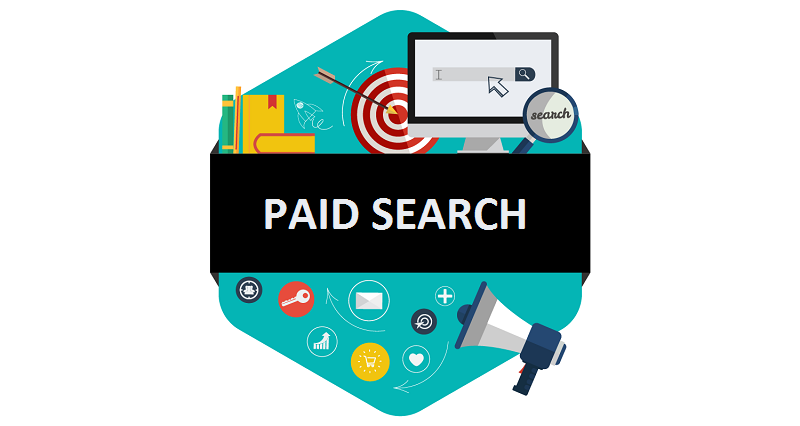Paid search advertising is a dynamic and competitive field. To stay ahead, you need to implement advanced optimization techniques that go beyond basic strategies. Here are some advanced techniques for paid search optimization.

1. Utilize Machine Learning and AI
Smart Bidding Strategies
- Automated Bidding: Leverage AI-powered smart bidding strategies like Google’s Target CPA or Target ROAS. These strategies use machine learning to optimize bids in real-time based on performance data, maximizing conversions and revenue.
- Bid Adjustments: AI can adjust bids dynamically based on various factors, including user behavior, device, location, and time of day. This helps in achieving optimal performance without manual intervention.
Predictive Analytics
- Forecasting: Use predictive analytics to forecast future performance trends based on historical data. This helps in making informed decisions about budget allocation and campaign adjustments.
- Customer Segmentation: AI-driven predictive models can segment your audience more accurately, enabling more precise targeting and personalized ad experiences.
2. Advanced Keyword Strategies
Keyword Sculpting
- Granular Keyword Grouping: Create highly targeted ad groups with granular keyword grouping. This allows for more specific ad copy and better match between user intent and ad content.
- Long-Tail Keywords: Incorporate long-tail keywords to capture niche search queries with lower competition. These keywords often have higher conversion rates and lower CPC.
Keyword Match Types
- Broad Match Modifiers: Use broad match modifiers to increase control over keyword targeting while maintaining some flexibility. This ensures your ads appear for relevant variations of your keywords.
- Negative Keywords: Continuously refine your negative keyword list to filter out irrelevant traffic and reduce wasted spend. Regularly review search query reports to identify new negative keywords.
3. Enhanced Ad Copy Techniques
Dynamic Search Ads (DSA)
- Automated Ad Creation: Use Dynamic Search Ads to automatically generate ad copy based on the content of your website. This helps in creating highly relevant ads without manually crafting each one.
- Landing Page Relevance: Ensure that DSAs direct users to the most relevant landing pages, improving the user experience and conversion rates.
Ad Personalization
- Dynamic Keyword Insertion: Use dynamic keyword insertion to tailor ad copy based on the search query. This makes your ads more relevant to users and can improve CTR.
- Custom Ad Copy: Create multiple ad variations with different messaging to appeal to different audience segments. Test and refine these variations based on performance data.
4. Advanced Landing Page Optimization
A/B Testing
- Comprehensive Testing: Conduct A/B testing on various elements of your landing pages, including headlines, calls to action, images, and layouts. This helps in identifying the most effective elements for improving conversion rates.
- Multivariate Testing: Use multivariate testing to simultaneously test multiple elements on your landing page. This provides deeper insights into how different combinations of elements affect performance.
Personalization
- User Segmentation: Personalize landing pages based on user segmentation, such as demographics, location, or behavior. Tailored content and offers can significantly enhance user engagement and conversions.
- Dynamic Content: Implement dynamic content on landing pages that adjusts based on user data, such as recent search queries or past interactions. This creates a more relevant and personalized experience.
5. Leveraging Advanced Analytics
Attribution Modeling
- Multi-Touch Attribution: Use multi-touch attribution models to understand the full customer journey and how different touchpoints contribute to conversions. This helps in allocating credit more accurately across channels.
- Custom Attribution Models: Create custom attribution models tailored to your specific business goals and sales cycles. This provides a more accurate picture of how your paid search efforts impact overall performance.
Data Integration
- CRM Integration: Integrate your paid search data with CRM systems to gain deeper insights into customer behavior and campaign effectiveness. This helps in tracking customer lifetime value and optimizing ad spend based on customer data.
- Cross-Channel Analytics: Analyze performance data across different channels, including social media, email, and display advertising. This provides a holistic view of your marketing efforts and helps in optimizing cross-channel strategies.
6. Advanced Audience Targeting
Custom Audiences
- Remarketing Lists: Create and target remarketing lists based on user behavior, such as website visits or cart abandonment. Tailor your ads to re-engage users who have previously interacted with your brand.
- Lookalike Audiences: Use lookalike audiences to find new users who share similar characteristics with your existing customers. This helps in expanding your reach to potential customers who are more likely to convert.
Behavioral Targeting
- Behavioral Segmentation: Segment your audience based on behavior, such as past search queries, browsing history, or engagement with previous ads. This allows for more precise targeting and personalized ad messaging.
- Contextual Targeting: Use contextual targeting to display ads based on the content of the websites users are visiting. This helps in reaching users who are actively interested in related topics.
7. Optimizing for Voice Search and Visual Search
Voice Search Optimization
- Natural Language Queries: Optimize for natural language queries and conversational search terms. Voice search often involves longer, more conversational phrases, so adjust your keyword strategy accordingly.
- Local Optimization: Focus on local SEO and optimize for location-based queries, as voice search users often seek local information. Ensure your ads and landing pages are optimized for local relevance.
Visual Search
- Image Optimization: Optimize your ads and landing pages for visual search by using high-quality images and providing relevant image metadata. This helps in capturing traffic from users who use visual search technology.
- Product Listings: Ensure that product listings and images are optimized for visual search platforms. This enhances visibility and relevance for users searching with images.
8. Continuous Improvement and Innovation
Regular Audits
- Performance Reviews: Conduct regular audits of your paid search campaigns to identify areas for improvement. Review metrics, ad copy, keywords, and landing pages to ensure optimal performance.
- Industry Trends: Stay updated with the latest industry trends and technological advancements. Implement new strategies and tools to keep your campaigns competitive and effective.
Experimentation
- Innovative Strategies: Experiment with new ad formats, bidding strategies, and targeting options. Testing and innovation can lead to discovering new opportunities and improving campaign performance.
- Feedback Loops: Use feedback loops from performance data and user interactions to continuously refine and optimize your campaigns. This helps in staying agile and responsive to changes in the market.
Conclusion
Advanced techniques for paid search optimization can significantly enhance your campaign performance and drive better results. By leveraging machine learning and AI, implementing advanced keyword strategies, personalizing ad copy, optimizing landing pages, and utilizing advanced analytics, you can achieve superior performance and maximize ROI. Regularly review and refine your strategies, stay informed about industry trends, and continuously experiment with new approaches to keep your paid search efforts ahead of the competition.




